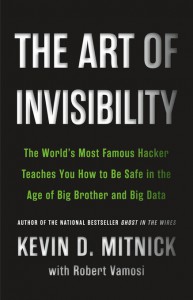This is How the World Will End: "The Art of Invisibility" by Kevin Mitnick, Robert Vamosi

This book calls for a limerick of "me" own:
This is how the world will end.
This is how the world will end.
Not with the roar of a lion
But with the click of a mouse.
Mitnick's and Vamosi's book is for the layman. You won't find here buffer overflows (NOP sled, or overwriting the stack return pointer), network scans/DoS attacks, integer overflow exploitation, details about recent techniques to bypass ASLR, shell-code injection, network sniffing, no kernel hacking/rootkit exploits, i.e., it does not break ground as a book to explain how hacking and software exploits work and how readers could develop and implement their own. It's a breezy read with lots of information, but the deep dives aren't there.
Reading this, it got me thinking once again on IT security aspects. I've done this recently when I read my last security book. Every time I read something like this, I always get in the mood "Oooh spooky, 'cyber security', how hip, how now." Cyber security is what used to be called 'spying' and that goes back to erm...Caesar Augustus as emperor lived in a modest two story home in central Rome. Two floors around an open central area and thin columns sparsely placed to form colonnaded mezzanine ground and top floor and no drapes or hangings - he lived in a modest house with open mezzanines so that NO ONE COULD HIDE BEHIND columns and listen to his conversations. Spying is as old as ancient governments.
If you're into Computer Science and CyberSecurity in particular, read on.
 6
6



